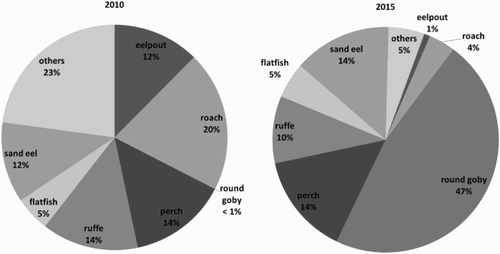Figures & data
Figure 1. Sampling stations of cormorant pellets, round gobies and piscivorous fish in the Pomeranian Bay. Numbers indicate the case study number.
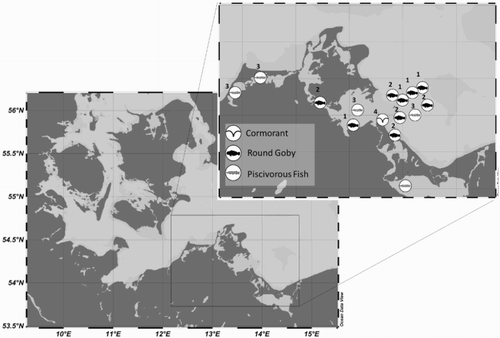
Figure 2. Frequency of occurrence of different prey taxa for different length classes, Case Study 2. Numbers in brackets indicate the number of non-empty analysed round goby stomachs.
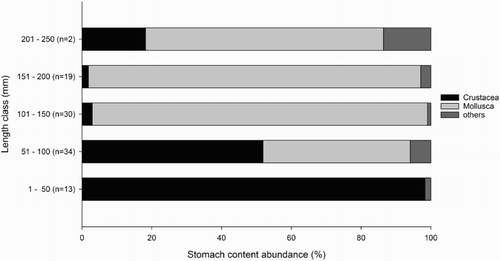
Table I. Detailed information about investigated round gobies (RG) and respective stomach contents from Case Study 1.
Figure 3. Diet composition of Perca fluviatilis in black (n = 104) and Sander lucioperca in grey (n = 57) expressed as Index of Relative Importance.
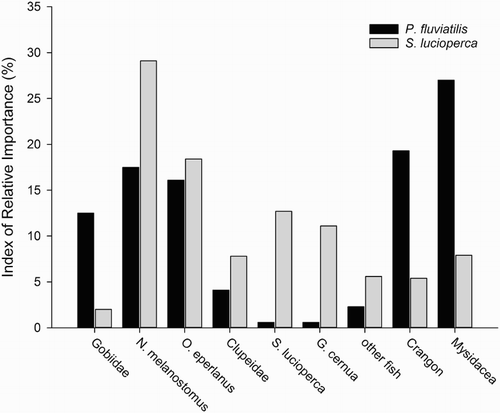
Table II. Information about analysed piscivorous fish species (Case Study 3).
Figure 4. Number of individuals and estimated biomass of round goby as percentage of the total number and biomass of the cormorant pellets for 2010–2015 in Peenemünde (Case Study 4) (Stark Citation2011; Myts Citation2012; Winkler et al. Citation2014). Number of analysed cormorant pellets: 2010 = 263, 2011 = 221, 2012 = 184, 2013 = 164, 2014 = 103, 2015 = 113.
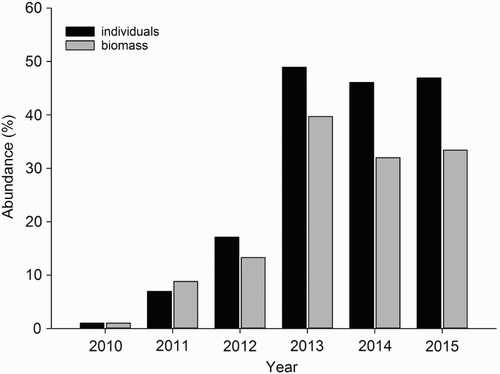
Figure 5. Abundance of fish species in cormorant pellets from 2010 (first appearance of round goby in prey) compared to 2015 (Case Study 4). Data for 2010 modified from Stark (Citation2011). Number of analysed cormorant pellets: 2010 = 263, 2015 = 113.
